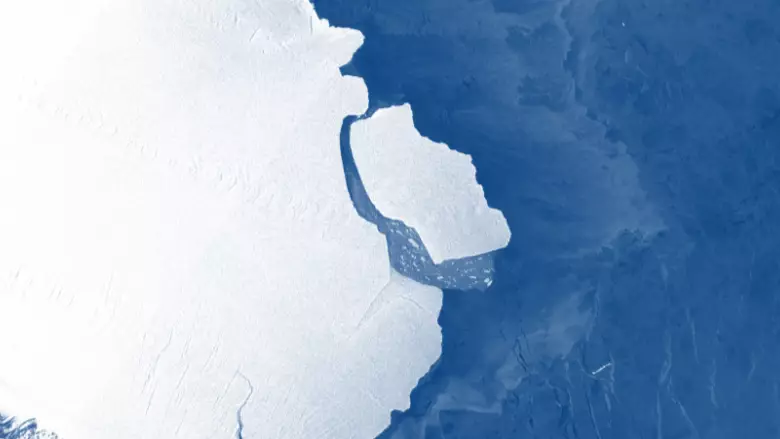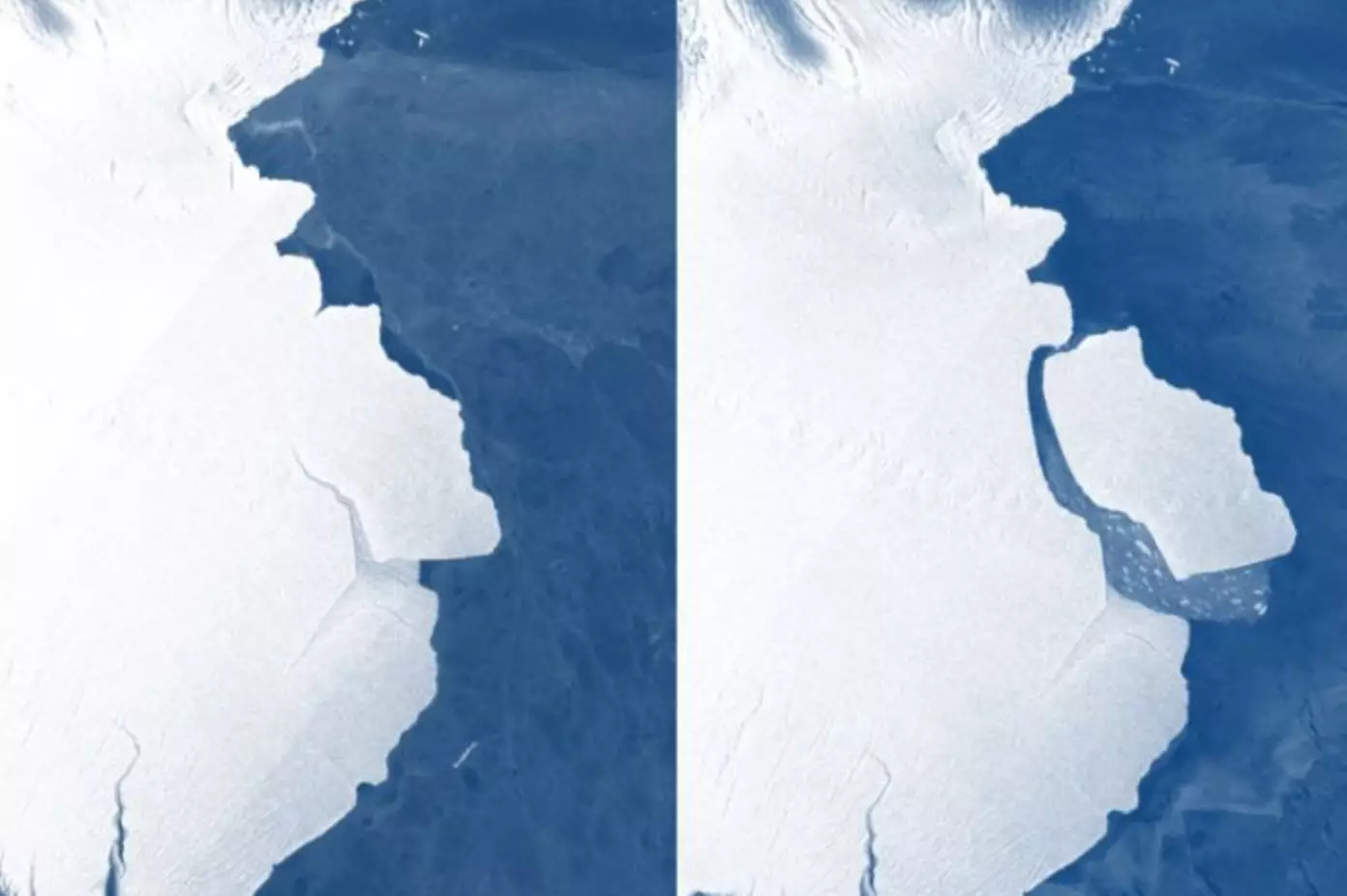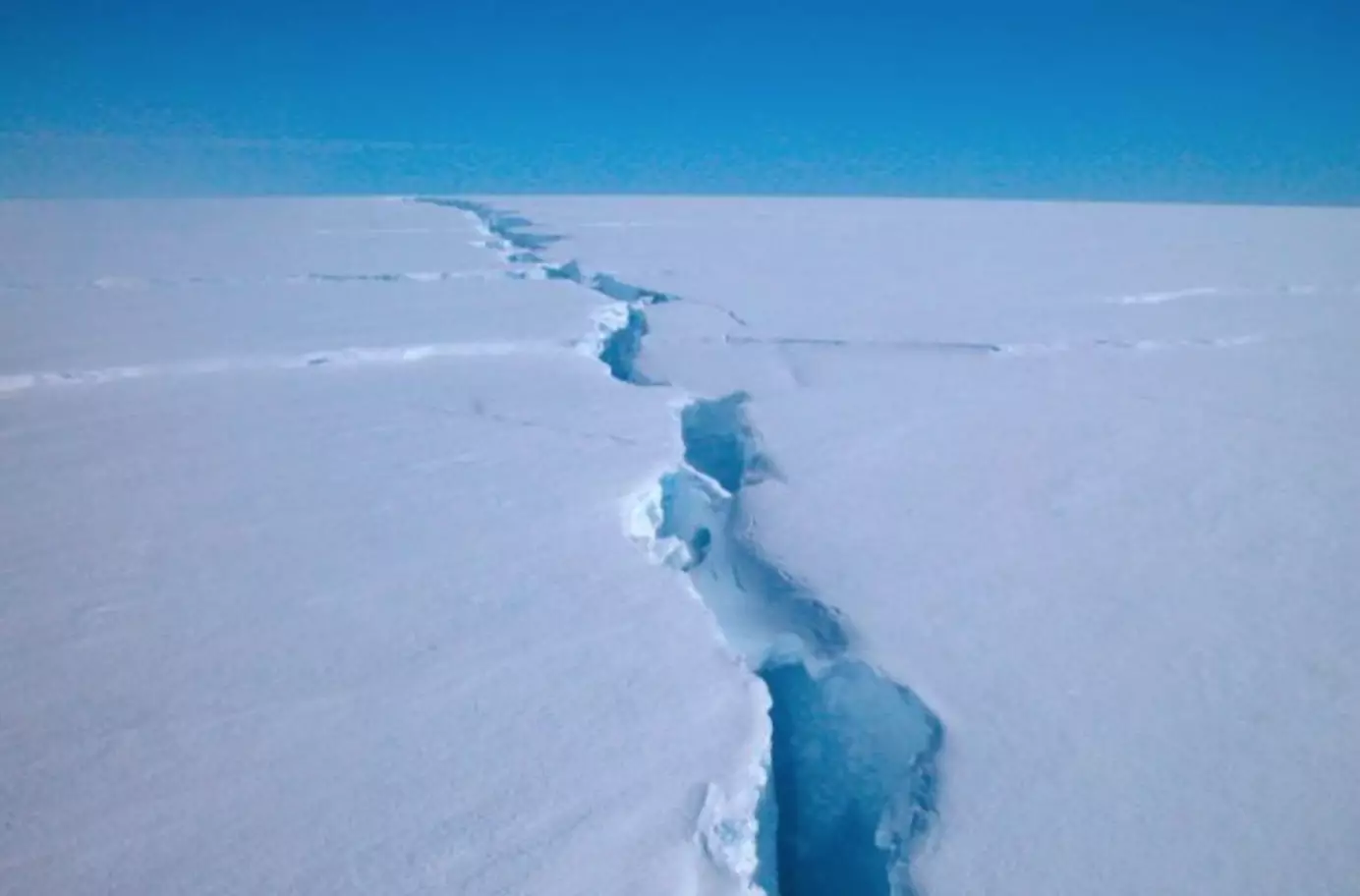
A humungous iceberg has broken off from mainland Antarctica, according to the Australian Antarctic Division.
Scientists have been watching the berg, which is 1,636-square-kilometres, or roughly the same size as urban Sydney, since the early 2000s when they started noticing it was breaking off.
They've now confirmed the land mass has broken off from the Amery ice shelf on the continent's east. This is the first major 'calving' event on this particular shelf since the 1960s.

Antarctic Studies and Scripps Institution of Oceanography Professor Helen Amanda Fricker released a statement saying: "I am excited to see this calving event after all these years. We knew it would happen eventually, but just to keep us all on our toes, it is not exactly where we expected it to be."
Advert
"We don't think this event is linked to climate change, it's part of the ice shelf's normal cycle, where we see major calving events every 60-70 years."
Now, you might be worried that this sudden presence of ice could lead to a dramatic rise in sea level.
But glaciologist with the Australian Antarctic Program, Dr Ben Galton-Fenzi assures us that it's all going to be okay.
"The calving will not directly affect sea level, because the ice shelf was already floating, much like an ice cube in a glass of water," Dr Galton-Fenzi said.

"But what will be interesting to see is how the loss of this ice will influence the ocean melting under the remaining ice shelf and the speed at which the ice flows off the continent."
Advert
While Professor Fricker says this particular event isn't linked to climate change, there is concern that there could be more calving events in the future which are a product of the evolving weather.
Sue Cook from the Institute of Marine and Antarctic Studies told the ABC: "We definitely expect iceberg calving to increase in the future under climate change.
"There are a number of different processes that'll happen. As waters around Antarctica warm up, they'll start thinning the ice shelves and making them more vulnerable to breaking up.
"Also you get increased surface melt on the ice shelves and that can get into fractures and forces them to expand."
Featured Image Credit: ESA Sentinel-1ATopics: News